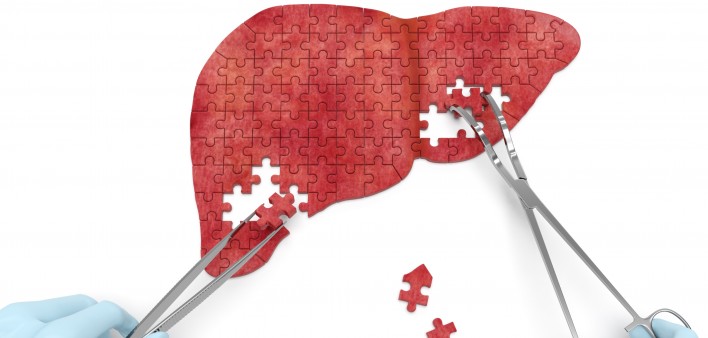Among people with HIV who don’t have hepatitis C virus (HCV), various factors raise the risk of liver fibrosis (scarring) and fatty liver disease.
Non-alcoholic liver disease (NAFLD) and its more severe form, non-alcoholic steatohepatitis (NASH), are a growing cause of liver complications in the United States and worldwide.
To zero in on such factors, Brazilian investigators studied 395 people on long-term HIV treatment, many of whom had taken older antiretrovirals (ARVs).
Thirty-two percent of the group had metabolic syndrome, meaning that they had at least three of the following: abdominal obesity, high triglycerides, low HDL cholesterol, high blood pressure and high blood glucose. Sixty-eight percent had abdominal obesity, 61 percent had abnormal lipids, 30 percent had high blood pressure and 10 percent had type 2 diabetes. Nine percent had fibrosis, and 35 percent had fatty liver disease.
After adjusting the data to account for various differences among the participants, the researchers found that each additional 10 years of age was associated with a 1.8-fold increased risk of developing fibrosis, while having a CD4 count below 200 and having type 2 diabetes were associated with a respective 7.8-fold and 2.7-fold increased risk.
As for fatty liver disease, the adjusted data indicated that men were more likely than women to have the condition. A closer look at the various facets of metabolic syndrome individually showed that abdominal obesity, type 2 diabetes and abnormal lipids were associated with a respective 10.7-fold, 9.7-fold and 2.6-fold increased risk of fatty liver disease. Having metabolic syndrome itself was associated with a 4.3-fold increased risk.
The investigators found that being on ARVs and living with HIV for longer were independently associated with fatty liver disease, especially when individuals had taken Retrovir (zidovudine, or AZT).
“Our results reinforce the need to prevent immunodeficiency and noncommunicable diseases, such as type 2 diabetes and obesity, and to reduce the burden of liver diseases in HIV-infected patients,” says the study’s lead author, Hugo Perazzo, MD, PhD, an assistant researcher at the Instituto Nacional de Infectologia Evandro Chagas-Fiocruz in Rio de Janerio.







Comments
Comments